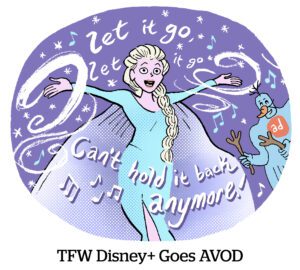People don’t just watch TV sitting on the couch (or, well, lying in bed).
Sometimes they go outside.
On Thursday, iSpot.tv announced its acquisition of Tunity, an app that helps users watch TVs in public spaces by streaming the audio through a user’s mobile device. This is iSpot’s third deal in 14 months. (iSpot bought ad-scoring firm Ace Metrix in January 2021 and TV ad measurement company DRMetrix in October.)
iSpot declined to share what it paid for Tunity.
Out-of-home measurement was a gap for iSpot, whose cross-channel measurement strategy is focused on video play verification. Tunity, which verifies audio plays, adds out-of-home screens to that measurement equation.
“We’re now replicating what we’re doing in the home, out of home,” said iSpot CEO Sean Muller.
Out-of-home represents a substantial missing piece from the TV measurement puzzle – and even when it’s counted, the channel doesn’t always get the credit it deserves. The Video Advertising Bureau recently called out Nielsen for failing to count out-of-home media consumption during the pandemic.
Based on data from hundreds of thousands of US individuals, Tunity estimates that the total number of TV viewing hours outside the home is around 100 million hours a day – or 10% of total TV consumption.
Although the pandemic reduced foot traffic to public places (that’s putting it mildly), people are starting to leave their homes again, so Tunity’s usage is ramping back up as more people end up in front of screens at gyms, bars and hotels.
“We’ve brought [measurement] equalization into the linear and streaming TV world already,” Muller said. “Now our vision is to bring that [equalization] to OOH.”
Measuring TV OOH
But nearly everything about the TV viewing experience is different when in public.
For one, there are many more TV screens in gyms and bars than there are in your living room, which creates “an apples and oranges comparison” when it comes to omnichannel TV measurement, said Paul Lindstrom, head of research and analytics at Tunity.
Counting TVs without volume that no one’s watching just because video is playing will make CPMs “look higher in a cross-platform buy,” leading to a “systematic understatement of linear TV,” said Lindstrom.
This tricky dynamic is why Tunity counts video-based impressions first, and then follows with audio play to verify sustained engagement.
Why then did Nielsen get into hot water for undercounting OOH audiences? Nielsen measures audio both in-home and out-of-home.
In Lindstrom’s view, Nielsen’s issue is the lack of a deterministic audio signal.
Nielsen still uses portable people meters (PPM) to pick up audio signals from individuals included in its panel. The signal can determine what content a viewer is watching, but it can’t determine the viewer’s location beyond whether they’re home.
“The bulk of the audio Nielsen picks up is [actually just] guest viewing in other people’s homes,” Lindstrom said. “That’s not out of home; that’s out of your home.”
In essence, Lindstrom said, “Nielsen is picking up OOH as a byproduct of [its] other measurement [products].”
But, to be fair, even the Media Rating Council falls short on OOH in its standard recommendations.
“The MRC suggests that any cross-platform comparisons should [share an] audio status,” Lindstrom said. But that doesn’t account for all those TVs at the back of the bar playing the Mets game on mute.
As advertisers access more omnichannel inventory, however, “there will certainly be recognition and adjustments to what the MRC thinks should be done,” Lindstrom said.
And more all-encompassing standards will create more competition.
“Bringing in [audiences] that would normally be more difficult to reach with in-home media buys is certainly going to have a positive impact on CPMs,” Lindstrom said. “A full measure that can identify [cross-screen] viewing [will allow] agencies to be less risk averse – [they’ll] be willing to pay a higher CPM for the audiences they [can] get.”
This article has been edited.











